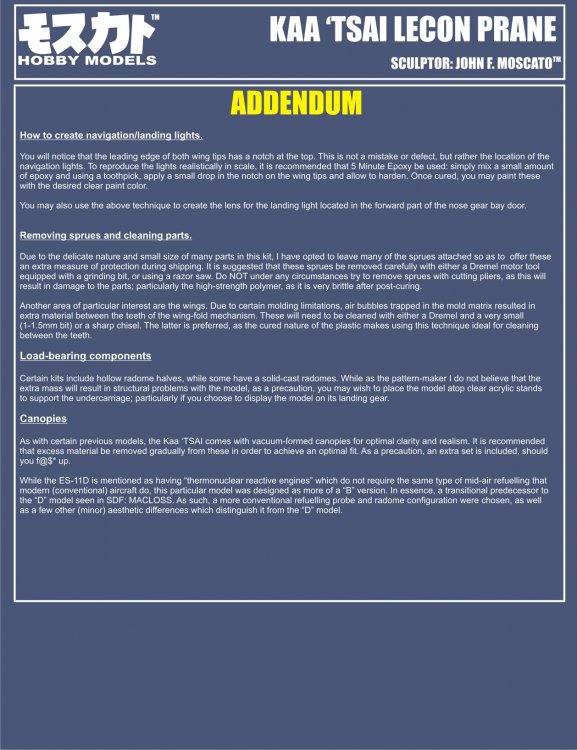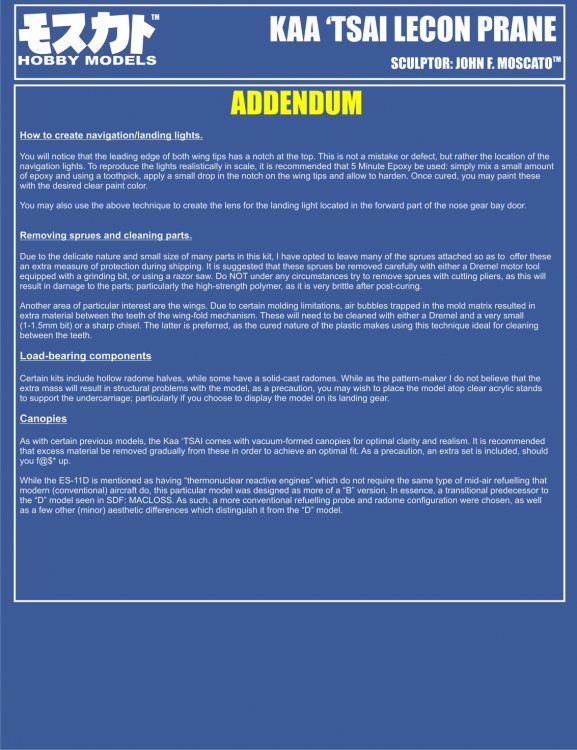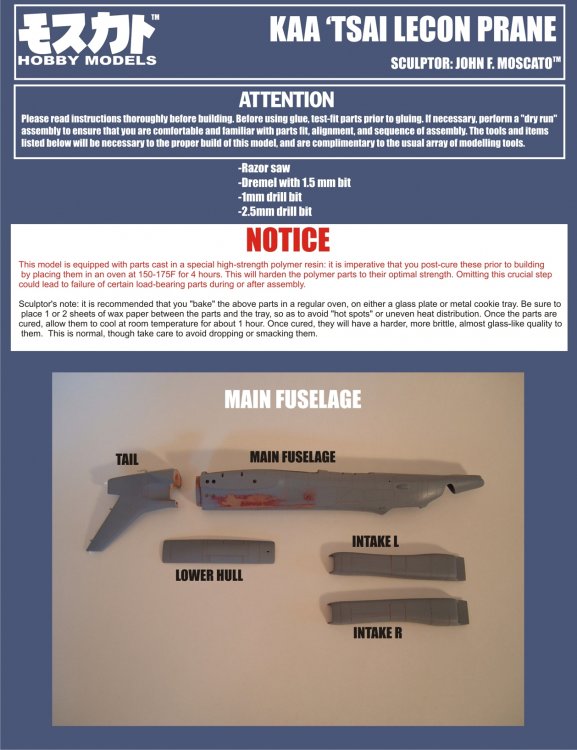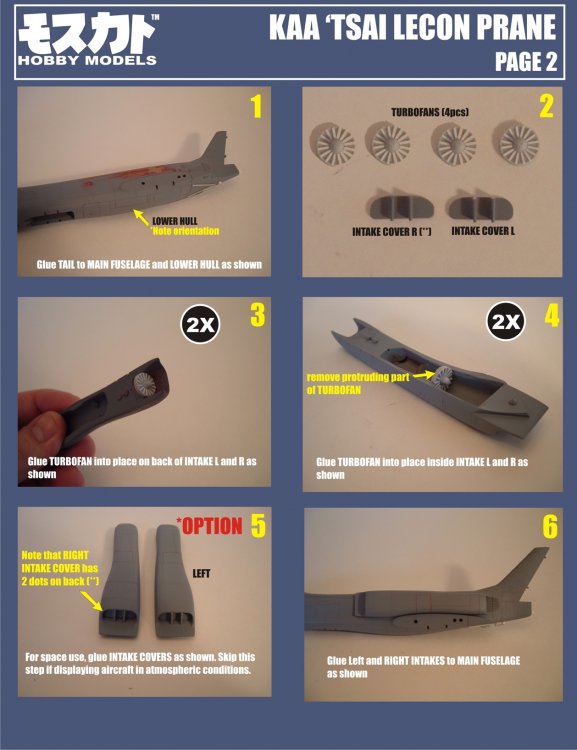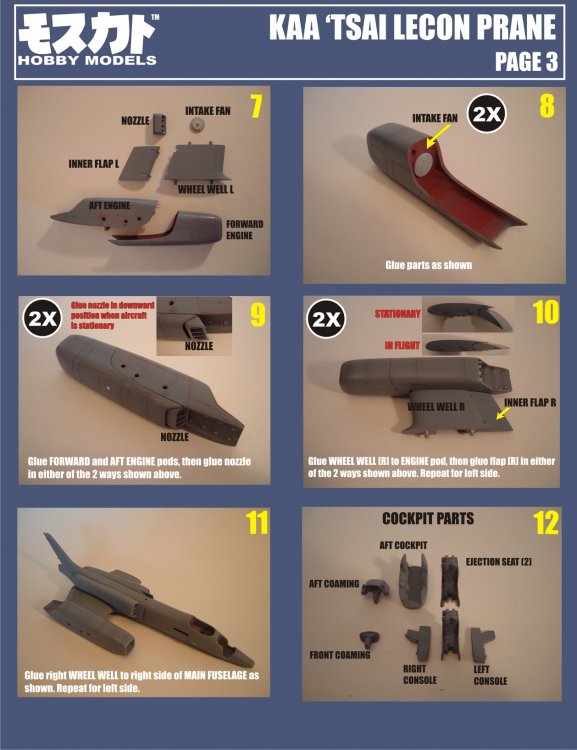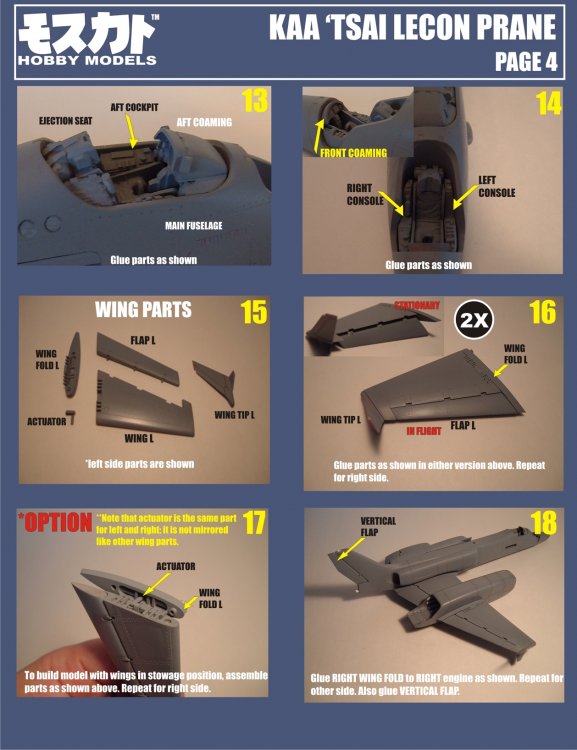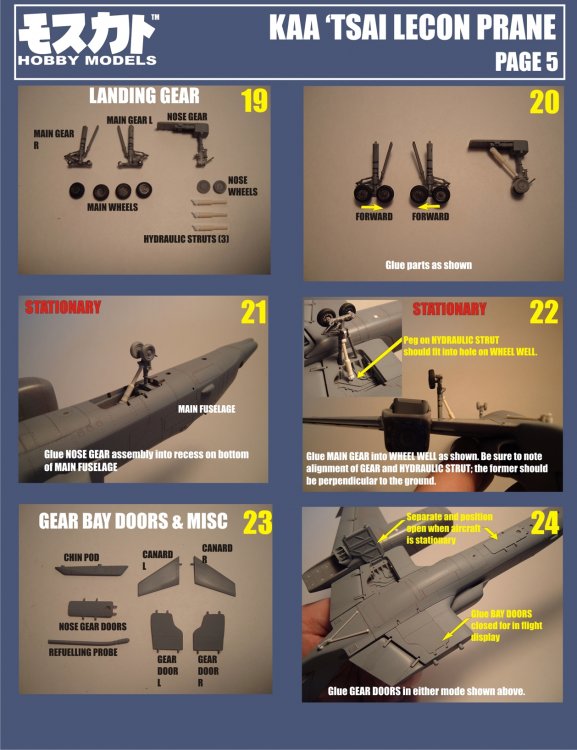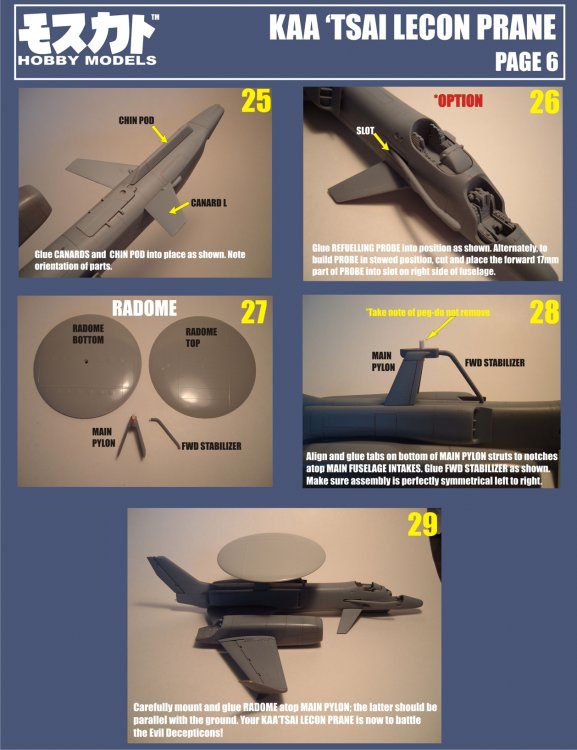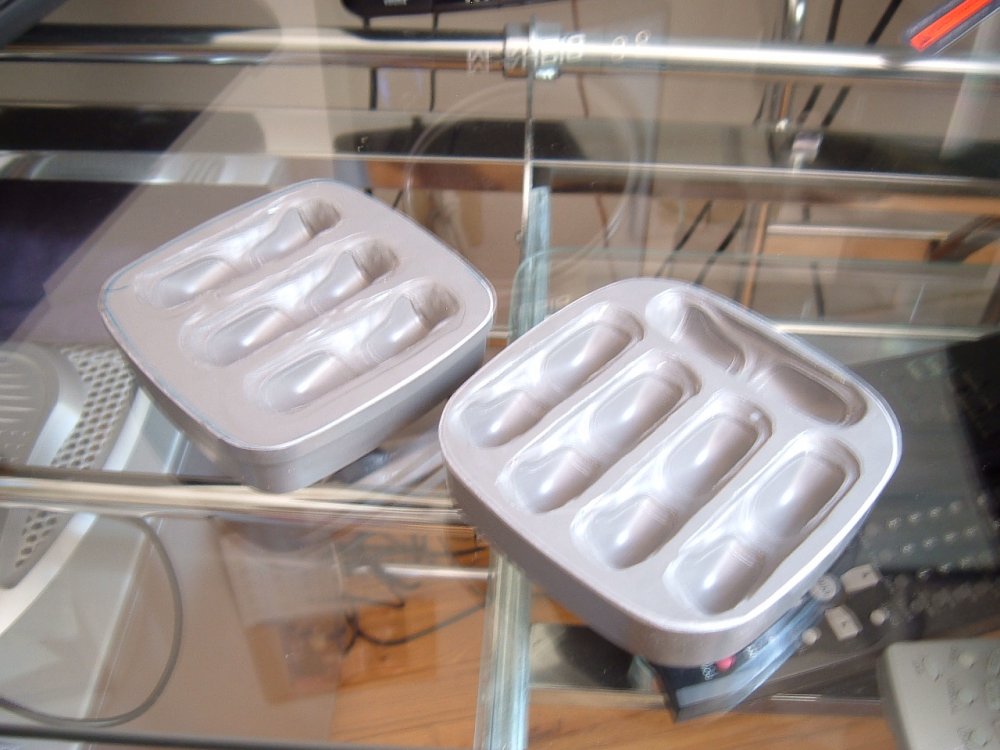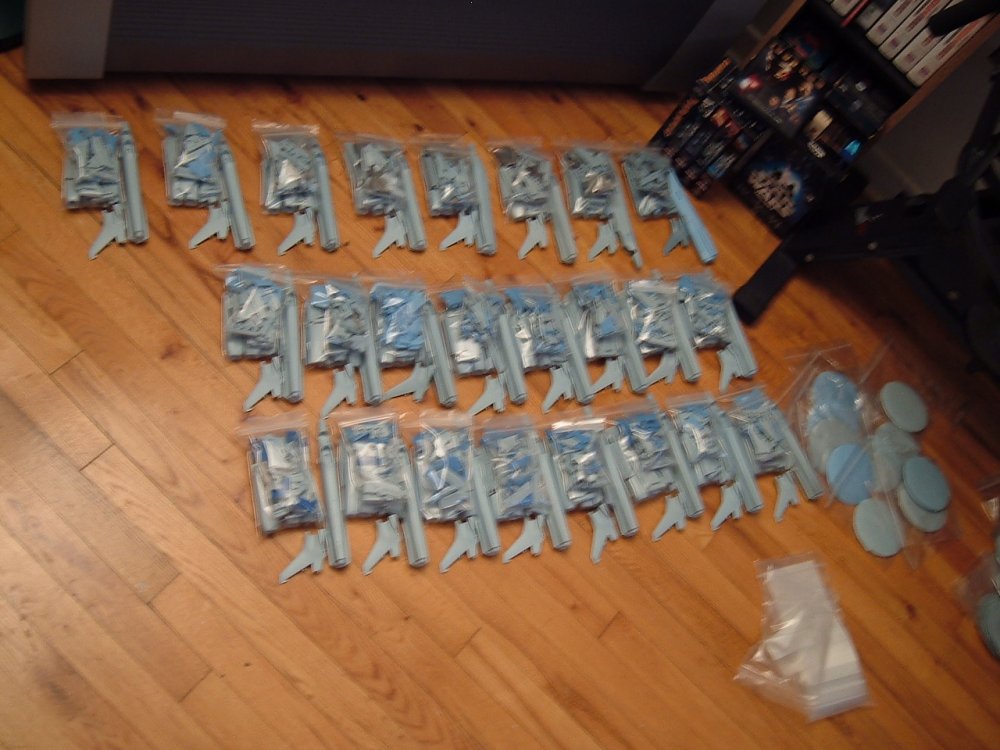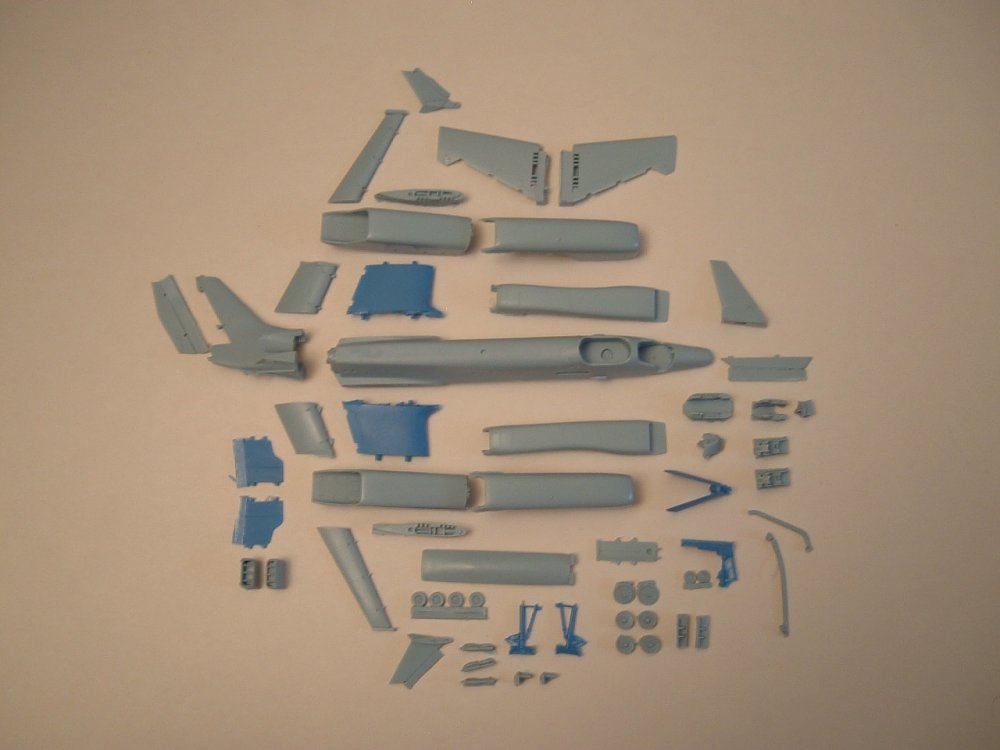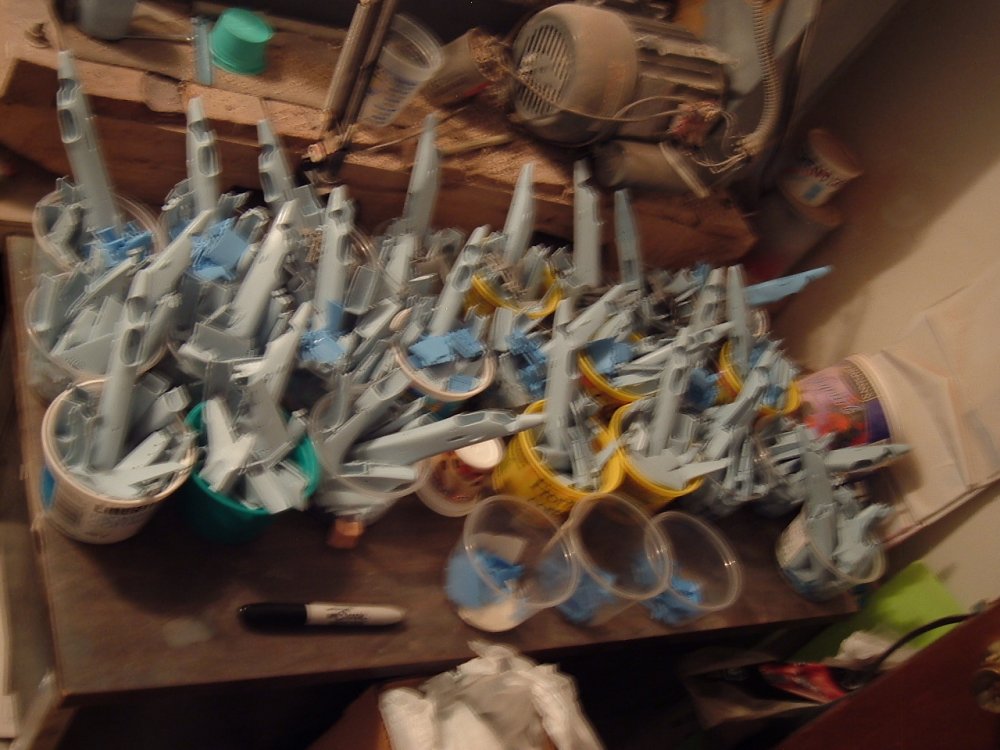-
Posts
3549 -
Joined
-
Last visited
Content Type
Profiles
Forums
Events
Gallery
Everything posted by captain america
-
**Waves Kicker773 in** Shoot me a PM and I'll fix you up
-
2 more days before I shut down production...
-
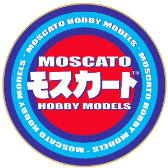
The Transformers 3 Thread--A Michael Bay Thread
captain america replied to areaseven's topic in Anime or Science Fiction
Notice how they have a little blue "cover" over the hood ornament? My money is on it being a Decepticon. -
Hi everyone. Quick update (or more precisely NO update.) Still no word on when I'll be getting the canopies, and once again, please accept my sincere apologies for the delay. The second I know when I'll be able to ship your models out I will post. Also, I will keep the order window for the Kaa ,Tsai open until Friday the 13th, at which point I will cease production, so there's still a chance to snag a kit until then. As always, I remain at your disposal if you have any questions.
-
Assuming that I can get sufficient demand to resurrect it, you'd likely be looking at 7 big ones price-wise, including screws, acrylic pieces & decals. My idea was to break it down into 6 modules, with me offering one module every 1-2 months: this makes the price easier to manage, and the work load easier to manage as well. It's hard to convey, but just one arm of the Beast is more complex than one of my 1/72 Destroids. Assuming it even comes to fruition, it would be commencing around late October to mid-November, and I would easily give everyone a 30-day heads-up to prepare... Including myself!
-
Parts of the "Beast" were sent off to a couple of fellow MWers to evaluate, examine & perform tests on. In a way, perhaps it was for the best that it was forgotten for so many years; gave me a chance to do some other interesting projects in the meantime and truly understand that it was for the best. Now, with more experience and clear-headedness under my belt, I have the opportunity to unleash its true potential.
-
Hehe, well in point-of-fact it WAS scattered across North America, but is now happily all under one roof. I mean, it's not a done deal yet by any means, but a few advances in technology and some clever re-thinking could make it possible. Oh, BTW, I edited the destructions in the other thread, so those are ready to download for those who had viewing difficulties with the previous jpegs. Still waiting on the canopies.
-
Ok, Destructions all re-formatted and ready for download. Please forgive my tardiness.
-
Oh, I can pull it off no sweat (if I can make a Glaug, I can make anything!) However, I MAY decide to revisit an old Mospeada project first. Something that's been in storage for years...Know what I mean? If you do, don't post it, I want to keep that hush-hush
-
-
Hi guys. I'm going to do a little test by week's end and post a RGB-converted sample of the instructions. Hopefully, this will cure the previous issues of the images appearing in negative.
-
Hi Jason. I'm still waiting on the canopies. They're being done now from what I can gather... Just waiting for them to come back. I'll post when I get an update.
-
This is damn peculiar: I'm getting the same problem. When I uploaded the images originally, I was on my PC. Now I'm on my Mac and while the images look OK online, whether I download them back from MW or open the ones I transferred from my PC, they have that "negative" look to them. Must be something that didn't convert over properly somehow
-
Oh, and here's the addendum page. Just a few helpful hints and explanations; those who requested email versions should have this already.
-
Hi Carl. PM me with your addy and I'll shoot those off to you. It might very well be something related to "work safety" that blocks images from certain sites. I shall adapt and overcome
-
They're all jpeg images. If you can't read them, LMK what format works better for you and I'll e-mail.
-
Hi guys! Here they are, ready for downloading. I'll probably also include a little addendum later on with tips & hints.
-
Hi bullet. From what little I know, I think it's been pretty quiet on the Macross F kit front for some time. A VF-171 would be awesome, but knowing Bandai, they likely won't touch it.
-
I can't believe I missed this thread! Man, I gotta stop working so hard Looks like it's progressing quite well so far, and I humbly apologize once again for my super ginormous pour stubs. I can't wait to see this baby built
-
I hear ya! I have my resin straight-up! Quick little update: Kits are being bagged, then bubble wrapped & boxed as we speak; vac forming masters for the canopies are done and on their way to be produced. Will start the destructions on Monday, and should have them finished and posted by Thursday next week. 11 slots still open... Oh, and happy belated CANADA day to all the Canuckians, and a happy preemptive Independence day to everyone south of the border!!
-
Hi Kei. Awesome dio, it really has presence! Musta been a bear to open up those fuselage panels, but it was worth it; keep up the good work
-
Tactical blue Quick update! Casting is going great; I've got 25 kits ready thus far, and have already re-poured a couple of molds, which is why in the exploded pic, there is no radar dish. Some of these are cast in 2 pieces (hollow) and the later versions will be 1 piece and solid. I don't foresee the extra weight being a problem, otherwise I would've just kept it hollow. Please forgive the shaky studio pic; for whatever reason, I just couldn't get my camera to cooperate. Also, I'm still waiting on the epoxy for the canopy bucks, so just another delay in the food chain, but nothing terribly unexpected. P.S: the deeper blue parts are the high-strength polymer--the one you have to bake in the oven.
-
Nope, purple is out, tan is in I figured that I'd kept the purple for the first 5 years, and figured that after that milestone, we'd be due for a change. No more grey resin either
-
Not flesh, porymer lesin
-
Hi everyone! Ok, as per my previous message, today kicks-off payment time for the Kaa-'Tsai, so here's the breakdown. -Each kit: $185.00 Shipping for North America: -1 kit: $16.00 -2-3 kits: $25.00 International shipping: $35.00 per kit Payments are to be accepted through Paypal, and as before, please add 4% to the total ( kit(s)+shipping ) For those of you who are new to dealing with me, you can just send me a PM with your full name & address, and I'll give you the necessary Paypal info. Important notice: I already have about 12 kits cast, but there will be an undetermined delay for the canopies, so I thank you in advance for not ripping my head off (' ) That having been said, orders will be processed on a first-paid basis, and as always, I remain at your disposal if you have any questions. I'll also be posting a pic of the overall parts breakdown early next week. I think I lost count at 64...

